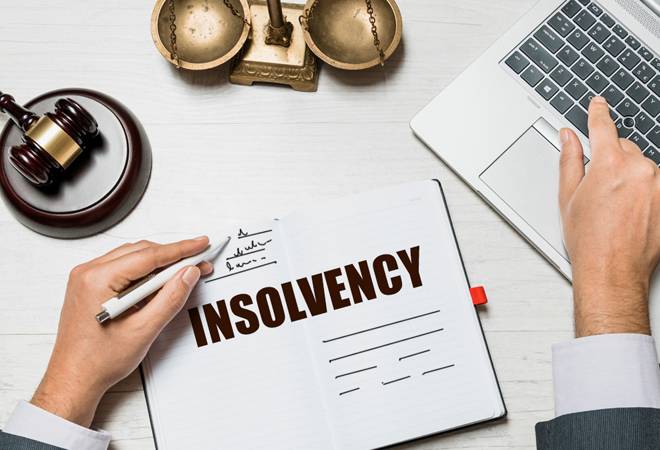A Biased View of Insolvency Practitioner
Table of ContentsThe Basic Principles Of Insolvency Practitioner Insolvency Practitioner for DummiesAll about Insolvency PractitionerThe 3-Minute Rule for Insolvency PractitionerExcitement About Insolvency PractitionerInsolvency Practitioner Fundamentals ExplainedFascination About Insolvency Practitioner
Insolvency is when responsibilities are more than the value of the business, or when a borrower can not pay the debts they owe. A company can become financially troubled because of a number of circumstances that cause inadequate capital. When confronted with insolvency, a business or individual can speak to creditors directly and restructure debts to pay them off.Bankruptcy can bring about bankruptcy process, in which lawsuit will certainly be taken against the financially troubled person or entity, and properties may be liquidated to settle arrearages. Local business owner may speak to creditors straight and restructure financial obligations right into even more manageable installations. Financial institutions are typically amenable to this strategy because they want to be settled and prevent losses, also if the repayment gets on a delayed timetable.
The 25-Second Trick For Insolvency Practitioner
The proprietor produces a proposition describing how the financial debt might be reorganized using expense decreases or various other strategies for assistance. The proposal reveals creditors how business may create enough money flow for profitable operations while paying its financial debts. Typically, a forgiven financial obligation might be thought about revenue by the Irs (INTERNAL REVENUE SERVICE).

Insolvency Practitioner - Questions
The business may end up paying huge quantities of money in damages and be overcome operations. When operations discontinue, so does the company's earnings. Absence of revenue results in accounts payable and financial institutions asking for money owed to them. Some business become insolvent since their items or solutions do not progress to fit customers' changing requirements.
Expenditures go beyond incomes and bills stay unpaid. Kinds of bankruptcy consist of cash-flow insolvency and balance-sheet insolvency. Cash-flow insolvency occurs when a company has the possessions to cover their financial obligations yet they remain in the incorrect type, such as realty rather of liquid funds. Balance-sheet bankruptcy, on the various other hand, shows a lack of possessions in any type to cover financial debts.
The internal revenue service states that an individual is insolvent when the total responsibilities surpass total properties. A personal bankruptcy, on the various other hand, is an actual court order that depicts exactly how an insolvent person or service will pay off their creditors, or exactly how they will sell their assets in order to make the settlements.
4 Easy Facts About Insolvency Practitioner Explained

Understanding the aspects that can lead to bankruptcy, such as overspending, can assist you stop insolvency and its repercussions.
The 8-Minute Rule for Insolvency Practitioner
It is well known that directors and policemans of firms (and supervisors of restricted responsibility firms) owe fiduciary tasks to their companies and their shareholders (or members). These fiduciary why not try this out responsibilities are defined by state statutes and, though there are variations from state to state, they normally consist of a task of commitment and an obligation of care.
The responsibility of treatment calls for supervisors and officers to exercise diligence, to make educated choices, and to act in great faith so that their actions are in the most effective rate of interest of the firm. Beyond the scope of this conversation, some states permit these obligations to be limited either by so keeping in mind in the organizational documents or conforming with other requirements.
Excitement About Insolvency Practitioner
The majority of states specify insolvency in two means( 1) when a business's liabilities become above the amount of its assets or (2) when the business becomes incapable to pay its financial obligations as they become dueand embrace both interpretations (Insolvency Practitioner). The shift in obligations happens because when a business is bankrupt, there is no value in the firm beyond that owed check these guys out to the firm's financial institutions to ensure that the equity owners no longer have an economic stake in the firm
Take care about providing shareholders preferential therapy at the expense of lenders (e.g., accrediting and moneying a returns or a stock redemption). Take care concerning advantageous treatment between classes of investors. Make sensible efforts to discover all the facts prior to taking a specific course of action; directors should genuinely think that any choices made remain in the most effective interests of the firm in its whole (i.e., decisions will be reviewed in knowledge in light of the result of such actions on the company).
In any type of insolvency or bankruptcy proceeding, payments made to specific financial institutions at the expenditure of other creditors can be clawed back, especially if there is some link in between the company and the creditor. Consider recommending at an annual stockholder conference (or any various other meeting of stockholders) a resolution verifying that all prior business decisions and actions taken by the supervisors and officers of the corporation were taken in excellent faith after a workout of practical care.
The Greatest Guide To Insolvency Practitioner
Fully divulge any individual or business relationships with events beyond of purchases entailing the company to prevent the look of a dispute of rate of interest. In examining possible fund raising transactions or a sale of possessions of the struggling firm, realize that these deals might be inspected later on because of any succeeding growth of supervisors' fiduciary responsibilities to include financial institutions.